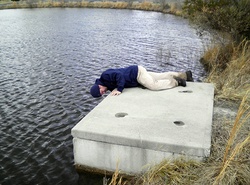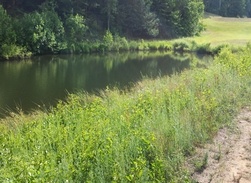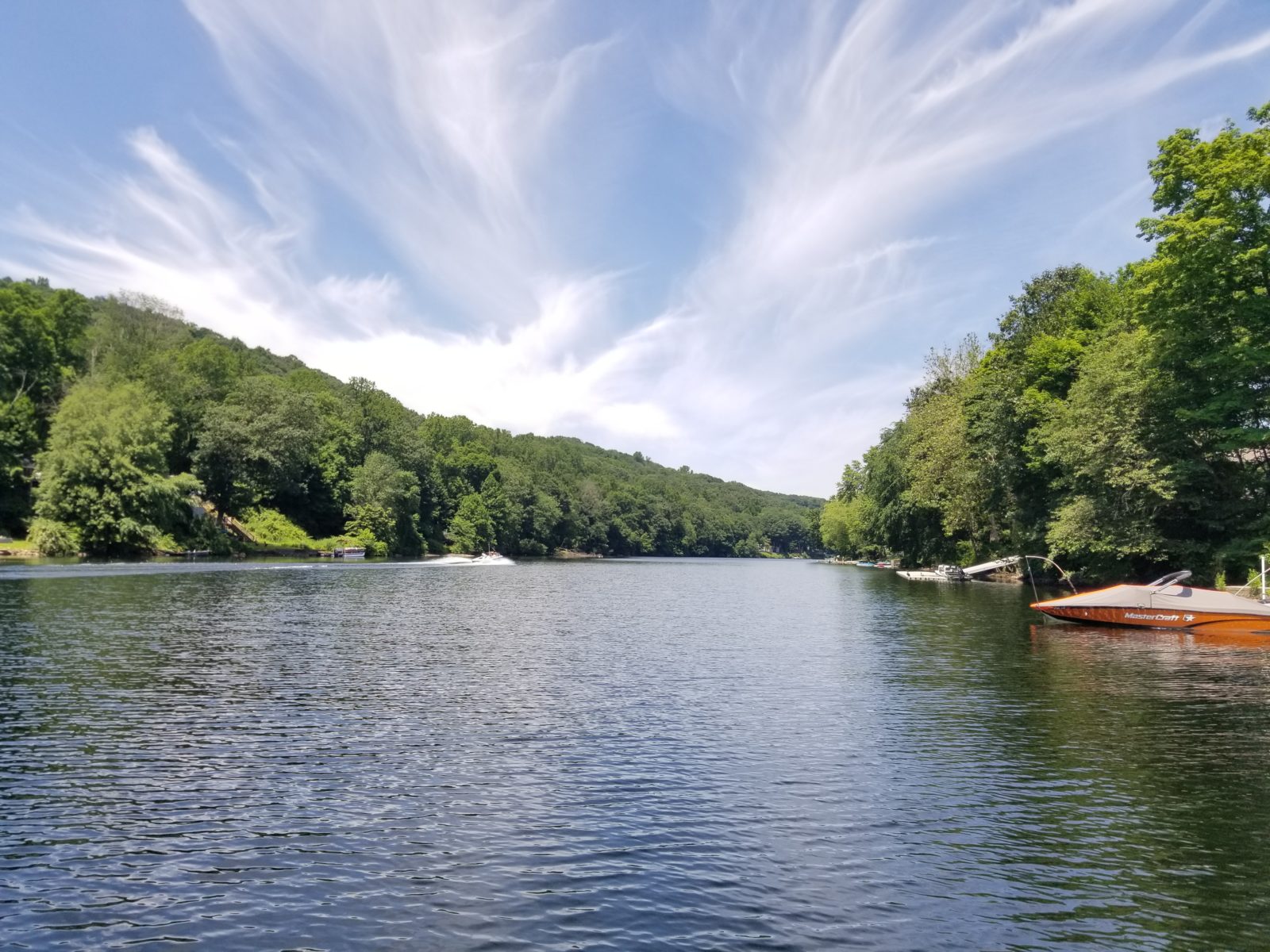Stormwater Management: Key Points to Passing an Inspection
July 10th, 2017
Written by Industry Expert Trent Nelson, Aquatic Specialist
 Stormwater management facilities are man-made structures that help reduce flooding, slow down water flow and clean pollutants from water. It is important to ensure that your stormwater management facilities are functioning properly, especially when it rains.
Stormwater management facilities are man-made structures that help reduce flooding, slow down water flow and clean pollutants from water. It is important to ensure that your stormwater management facilities are functioning properly, especially when it rains.
Stormwater inspections can vary depending on the state and even municipality in which your stormwater BMP or stormwater control measure (SCM) resides and with newer legislation, strengthened by the National Pollutant Discharge Elimination System, compliance is critical for many property owners and managers. Most inspections follow similar guidelines when determining whether or not the stormwater system is in compliance. The following are a few important key points to help you prepare—and hopefully pass—your next stormwater inspection.
Trash is undoubtedly one of the more common nuisances that stormwater facilities managers and, ultimately, lake and pond managers deal with. Trash that is left unattended in parking lots and other drainage areas often makes its way to the waterbody during rain events. Trash can clog effluent structures, including low flow orifices that help maintain a proper water level. Once this low flow is clogged, water level can rise and damage, or even kill, buffer and shoreline plantings. High water levels can also increase shoreline erosion and decrease the holding capacity for high flow events. Routine trash collection should be performed to reduce the buildup of trash along the shoreline and other areas of the waterbody.
 It is also critical to properly manage the vegetation growing in and around your stormwater lake or pond. Beneficial vegetative buffers that grow along the shoreline can help to stabilize bare soil, remove nutrients from the benthic layer and even create habitat for wildlife. On the other hand, nuisance vegetation can sometimes take over a BMP, reducing open water areas, slowing drainage times and possibly clogging the outlet systems. Nuisance vegetation like creeping water primrose, alligator weed and, in most situations, cattails are three of the more common emergent shoreline weeds that can spread quickly, out-competing beneficial plants and ultimately leaving a monoculture of nuisance plants that decrease the effective design and function of a stormwater system. Proper management of the aquatic plants in and around your waterbody is key in passing a stormwater inspection and should be one of the top priorities of any waterbody manager and owner.
It is also critical to properly manage the vegetation growing in and around your stormwater lake or pond. Beneficial vegetative buffers that grow along the shoreline can help to stabilize bare soil, remove nutrients from the benthic layer and even create habitat for wildlife. On the other hand, nuisance vegetation can sometimes take over a BMP, reducing open water areas, slowing drainage times and possibly clogging the outlet systems. Nuisance vegetation like creeping water primrose, alligator weed and, in most situations, cattails are three of the more common emergent shoreline weeds that can spread quickly, out-competing beneficial plants and ultimately leaving a monoculture of nuisance plants that decrease the effective design and function of a stormwater system. Proper management of the aquatic plants in and around your waterbody is key in passing a stormwater inspection and should be one of the top priorities of any waterbody manager and owner.
In addition to aquatic plants, dam vegetation is a red flag during a formal stormwater inspection, or even just a routine monitoring inspection. The roots of trees and woody vegetation can create holes in dams that can cause leaks. Tree roots can also damage pipes and other structural components of the inlet and outlet systems. Dam vegetation should be cut or mowed on a routine basis to prevent woody vegetation from growing and establishing on the dam slopes. Trees that are already present, and that are larger than 8-10-inch caliper size, may need to be removed. However, it is important to consult with a professional engineer, earth mover and stormwater inspector to help decide if removal of trees and their stumps may cause damage to the dam or other areas of the BMP.
While dam vegetation should be strictly managed, it should not be fully eradicated. Erosion caused by bare soil can cause serious issues for stormwater systems. During rain events, bare soil areas wash and channelize water movement, depositing soil and sediment into the waterbody. This sediment reduces the depth as well as water holding capacity of the system, and creates heavier sheet flow during rain events. If bare soil is present on a dam, structural integrity may be compromised by accelerated erosion. It is recommended that all bare soil be stabilized by sod, seed, appropriate straw or other matting that is available. If severe erosion and bank deterioration is present, redesign by a professional engineer may be required. Most erosion issues can be prevented through proper management, and annual stormwater maintenance is recommended to avoid large-scale reconstruction of shorelines.
Lastly, structural components of a stormwater system need to be visually inspected on a routine basis. Most inflow and outflow pipes are constructed with concrete, metal and plastic components that can last a long time. However, most structural issues can occur when blockages or settling happens that allow water to be misdirected or diverted to areas that were not designed to handle water and sheet flow. Once the structural integrity of these components is compromised, the stormwater system can fail to operate as designed. Repairs and cost associated with these damages can vary greatly, yet when action is taken early and from a proactive standpoint cost can be reduced greatly.
If the aforementioned items are addressed on a routine basis, passing a stormwater inspection should be a breeze. Stormwater repairs can become costly rather quickly. It is always better to remain proactive, and to partner with a professional lake and pond management company to help keep your waterbody in top shape and your stormwater facility functioning properly. If at any time the structural integrity of the dam, inlet pipes, outlet pipes or effluent structure is in question, it is important that a professional engineer who is well versed in stormwater systems construction be contacted to inspect the waterbody and its components.
Contact the experts at 888-480-5253 for all of your lake, pond and fisheries management needs.
 Trent Nelson is an experienced Aquatic Specialist with SOLitude Lake Management servicing clients throughout the Carolinas and is a former golf course assistant superintendent.
Trent Nelson is an experienced Aquatic Specialist with SOLitude Lake Management servicing clients throughout the Carolinas and is a former golf course assistant superintendent.
SOLitude Lake Management is committed to providing full service lake and pond management services that improve water quality, preserve natural resources, and reduce our environmental footprint. Our services include lake, pond and fisheries management programs, algae and aquatic weed control, mechanical harvesting, hydro-raking, installation and maintenance of fountains and aeration systems, water quality testing and restoration, bathymetry, lake vegetation studies, biological assessments, habitat assessments, invasive species management and nuisance wildlife management. Services, consulting and aquatic products are available to clients nationwide, including homeowners associations, multi-family and apartment communities, golf courses, commercial developments, ranches, private landowners, reservoirs, recreational and public lakes, municipalities, parks, and state and federal agencies. Learn more about SOLitude Lake Management and purchase products at www.solitudelakemanagement.com.










